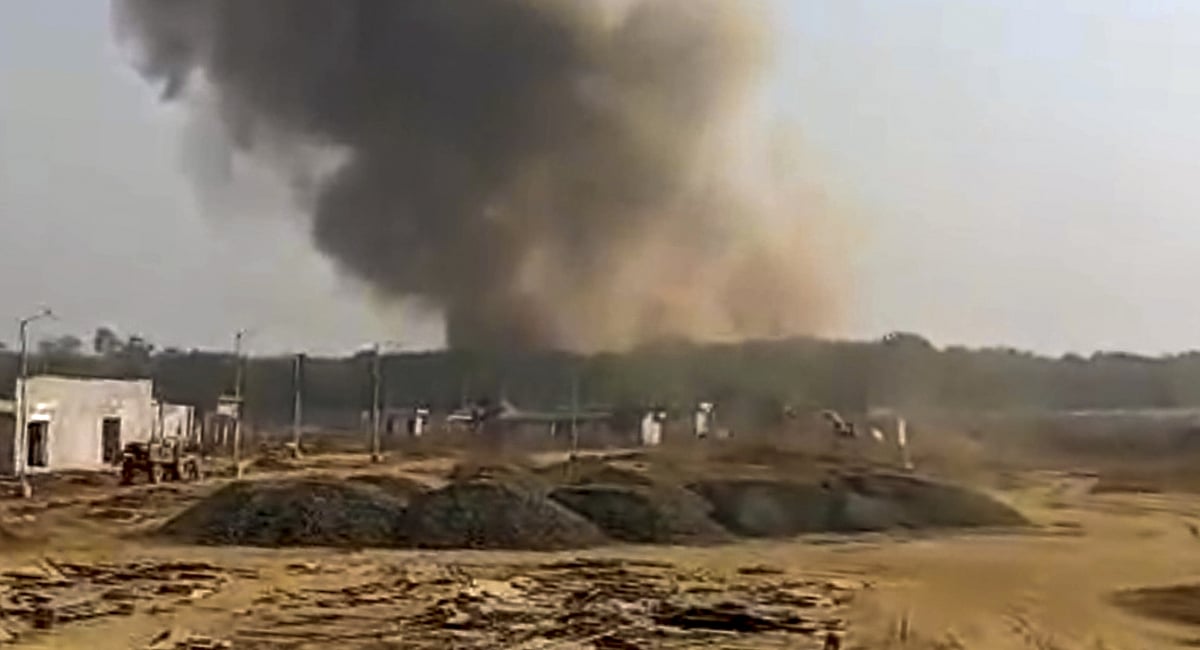 |
|
A devastating explosion rocked an ordnance factory in Bhandara, Maharashtra, on Friday morning, resulting in the tragic loss of eight lives and leaving several others injured. The incident, which occurred around 10:30 am at the factory located in Jawahar Nagar, sent shockwaves throughout the region and sparked immediate concerns about safety protocols within the facility. Initial reports from Union Minister Nitin Gadkari confirmed eight fatalities and seven injuries, though discrepancies emerged regarding the exact number of casualties and the status of those still trapped under the debris. District Collector Sanjay Kolte later clarified that four bodies had been recovered, and five injured individuals were rescued, with rescue efforts continuing for those potentially remaining trapped. The explosion caused significant damage, triggering a fire and leading to the partial collapse of a building within the factory complex. The National Disaster Response Force (NDRF) was swiftly deployed to the scene, employing specialized equipment to navigate the hazardous environment and safely extract individuals from the wreckage. The urgency and scale of the rescue operation underscore the severity of the blast and its potential for even greater loss of life.
The incident drew immediate responses from high-ranking government officials. Defence Minister Rajnath Singh expressed deep sadness over the tragedy, offering condolences to the bereaved families and assurances that all possible assistance was being provided to the affected individuals. Maharashtra Chief Minister Devendra Fadnavis's statement, indicating that between 13 and 14 workers were initially believed to be trapped, highlighted the initial chaos and uncertainty surrounding the event. The discrepancy between the numbers initially reported and those confirmed later emphasizes the challenges faced by emergency responders in accurately assessing the situation during the immediate aftermath of the explosion. The explosion's location within the "LTP section" of the factory is currently under investigation, and a full inquiry is expected to determine the precise cause of the blast and to examine potential lapses in safety measures. The identification of four deceased workers – Chandrashekhar Goswami (59), Manoj Meshram (55), Ajay Nagdeve (51), and Ankit Barai (21) – provides a glimpse into the human cost of this industrial accident. The injured, including N P Wanjari (55), Sanjay Raut (51), Rajesh Badwaik (33), Sunil Kumar Yadav (24), and Jaydeep Banerjee (42), received medical attention, underscoring the extensive impact the blast had on the workforce.
The Bhandara ordnance factory explosion underscores critical questions about workplace safety and risk management within industrial settings that handle potentially hazardous materials. The scale of the destruction and the loss of life necessitate a thorough investigation not only to determine the immediate cause of the blast but also to identify any systemic failings that may have contributed to the tragedy. A comprehensive review of safety protocols, emergency response plans, and training procedures is essential to prevent similar incidents in the future. This includes not only a focus on technical aspects, such as equipment maintenance and hazard mitigation, but also on human factors, including worker training, communication systems, and the overall culture of safety within the facility. The long-term implications of the explosion extend beyond immediate emergency response; it raises wider concerns about the safety of workers in similar environments across the country. The government’s response, including the deployment of the NDRF and the expressions of condolence from prominent political figures, highlights the seriousness with which the incident is being treated. However, lasting solutions require a commitment to long-term improvements in safety regulations, enforcement, and overall industrial safety practices.
The investigation into the Bhandara blast will likely focus on several key areas. A detailed examination of the "LTP section" where the explosion occurred will be crucial, including an analysis of the materials handled, the equipment used, and the overall working conditions. Experts will scrutinize any potential maintenance lapses, faulty equipment, or procedural failures that could have contributed to the incident. Furthermore, the investigation must also consider human factors such as training protocols for workers, adherence to safety regulations, and the effectiveness of communication systems during emergency situations. The goal is not only to ascertain the immediate cause but also to identify systemic weaknesses that could be replicated in other facilities. The outcome of the investigation will be instrumental in shaping future safety regulations and practices, potentially leading to significant changes in the way ordnance factories operate and manage potential hazards. Transparency and accountability in the investigation process will be crucial to ensure that lessons learned from this tragedy are implemented effectively to prevent future loss of life.
Source: Eight dead after blast at ordnance factory in Maharashtra's Bhandara, says Union Minister Gadkari
